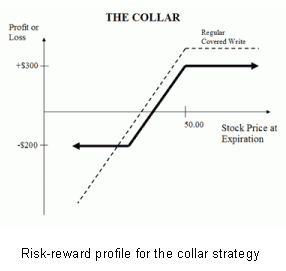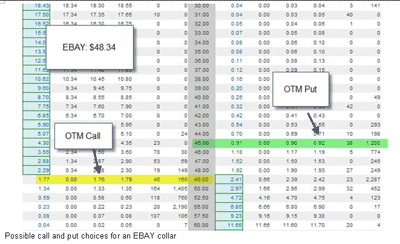With all the uncertainty in the markets—with the Presidential election results, fiscal cliff, and now the still largely unknown impact of superstorm Sandy—options expert Alan Ellman of The Blue Collar Investor offers a risk management strategy in case all hell breaks loose.
As safe a strategy as covered call writing is there is some risk; the risk is in purchasing the stock, not in selling the option. For this reason, some investors who sell covered calls also buy protective puts to alleviate some of the risk especially, in volatile markets like we’ve experienced recently. Remember, the owner of a put optionhas purchased the right, but not the obligation, to SELL 100 shares of the underlying stock at the strike price on or before expiration Friday. A put option is considered in-the-moneyif the strike price of the put option is higher than current market value of the underlying stock. Likewise, a put option is considered out-of-the-money if the strike price of the put option is lower than the current market value of the underlying equity. You will note that the in-the-money and out-of-the-money strike/share value relationships are opposite for calls and puts.
A protective put is a put option that is purchased for an underlying stock that is already owned by the put buyer. It defends against a decrease in the share price of the underlying security. When a protective put is used in conjunction with covered call writing, the strategy is referred to as a collar strategy. A collar is the simultaneous purchase of a protective put option and the sale of a covered call option. In a true collar strategy, the puts and calls are both out-of-the-money and have the same expiration dates and an equal number of contracts. Thus, we sell an out-of-the-money call and add additional downside protection for the underlying equity by purchasing a protective put option.
Example of a Collar
- Buy 100 shares of XYZ @ $48
- Sell 1 $50 (O-T-M) call option for $2
- Buy 1 $45 (O-T-M) put option for $1
- Net gain on the option buy and sale is $100 ($200-$100)
- This brings our cost basis down to $4700 ($4800-$100)
Possible outcomes
- Outcome if stock price surpasses the $50 strike price:
Shares are sold for $5000 ($50 strike price x 100 shares)
Results in a profit of $300 ($5000-$4700)
ROO = 300/4700 = 6.4%
- Outcome if stock prices falls below the $45 put strike price to $43:
Shares are sold for $4500 (not $4300) because of the protective put
Net loss is $200 ($4,700-$4,500) = (-) 4.3%
- Outcome if stock price remains @ $48:
ROO = $100 ($100/$4700) = 2.1%
The chart below depicts the risk profile and possible outcomes of the collar for this particular example:
Risk-reward profile for the collar strategy
As demonstrated in the chart above, the profit potential of an otherwise normal covered call position (dotted line) is muted due to the additional cost of purchasing the protective put (solid line); however, the protective put also gives us downside protection at the strike of the put. If you exit the covered call position early, you can sell the remaining protective put, thus slightly improving your return.
Here is an options chain for eBay (EBAY), a stock on our current Premium Watch List showing possible call and put selections for the collar strategy:
Possible call and put choices for an EBAY collar
Conclusion:
The use of protective puts when covered call writing will decrease downside risk, but also result in a lower initial premium return. The collar strategy is particularly useful in volatile or bearish markets. There are other strategies that can be executed during volatile market conditions.
By Alan Ellman, President, The Blue Collar Investor























